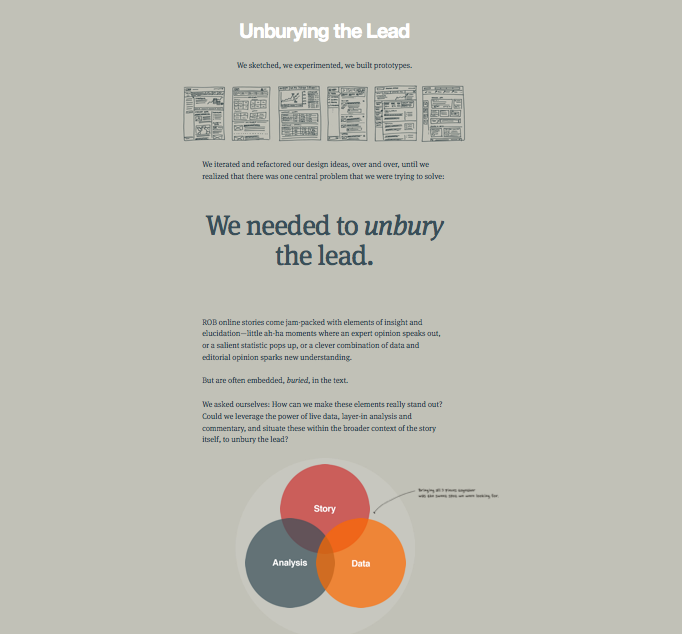Presenting Project 3 as a Case Study. Due Friday, May 3, 2014 at 8:00a. (10%)
Beyond the problem → solution → outcome format
During this semester, you have engaged in a range of discussions and techniques regarding designing web communications. Your final exam will consist of a 4-6 minute oral presentation in the form of a case study and visually designed using an HTML-based presentation. Each presentation will be following by a 3 minute question and answer session. As Newfangled describes, a case study “explains how you apply your expertise in the real world to potential customers that can relate to the problems you describe and understand the value of your solutions. It does this in detail — without seduction” (“Rethinking the Case Study“). A good case study “either eases a reader in, or is an instant TL;DR” (Newfangled).
Case studies are used as a persuasive tool. In this course, you can think of your case study as a highly descriptive example of the kind of work you do and/or what you want to do. As Newfanged suggests, it is helpful to think through writing your case study by keeping the following in mind:
- the kinds of problems you are good at solving
- how you probe and diagnose those problems
- your ideas for solutions
- how you test those solutions
- how you evaluate their performance
- how you execute the ones that hold up
- how you handle setbacks
- how you preserve forward momentum
- how you manage your relationships
There are two ways to write your case study:
- Follow the model provided by Newfangled (see Rethinking the Case Study): Summary, Backstory, Problem, Solution, Outcome, Reflection. The following are examples of this model:
- Follow the model according to AIGA Case Studies: Project brief, background, strategy, research, design solution, and challenges.
Steps to develop your case study
- Write the content for your case study
- Design your case study
- Plan your oral presentation
Step 1: Writing your case case study
A long-form case study should be at least 1500 words (Newfangled). It may be helpful to write a scratch outline before attempting to write your case study in full sentences. Keep your audience in mind as you begin further developing the text for your case study. Avoid using too much complex jargon that your audience may not be able to understand. It is certainly okay to user terms such as “usability study” or “usability heuristics”, but it may be useful to give a brief sentence or statement about what the term entails. After writing your case study, I suggest developing a quick a visual prototype of your case study in Word format or some other software program before moving to the next step.
You may choose to break up your navigation in the following manner:
- Summary and Backstory
- Problem and Solution
- Outcome and Reflection
- About the Designer
Step 2: Designing your case study
Many of your have visual images as part of your presentations to key audiences. For your final project, you will use a web-based designed case study to give a presentation to your peers and potential partners or other institutions. For this project, you can either design your own web-based design for your presentation or use templates from http://www.freecsstemplates.org. Here are some sample templates, but feel free to browse http://www.freecsstemplates.org for templates that suit your needs: Simplework, Embellished, Plain Display, Clear Figure, Softstring, Privy, Open Tools.
For people using HTML5: Modify the navigation using the <nav> tag. See Chapter 17 in HTML and CSS)
For people using CSS3: Write your reflection using CSS3 multicolumn. One way the multicolumn could be used is for the film series page.
Step 3: Planning your oral presentation
While your case study needs to be at least 1500 words, it is helpful to prepare an outline of oral presentation. You will need to present information located in each section of HTML presentation, such as the Summary, Backstory, etc, but leave enough time to talk in detail about your solution, outcome, and reflection.
